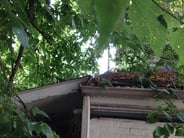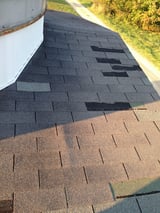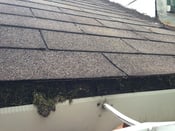Thankfully, winter is over; many states got more snow than they had seen in decades. Elsewhere, unprecedented cold temperatures, freezing rain, black ice on the roads, and damage to property was just as bad. Hopefully, the snow has melted enough for home and business owners to take stock of their property and examine their roofs for structural or other damage.
Spring storms can be as severe as the wrath of winter - if not worse. Heavy rain and hailstorms, tornadoes, and the summer hurricane season can all wreak havoc on property, so routine upkeep and timely repairs can save you from more costly, but avoidable roof repairs that wouldn’t be necessary with a regular roof maintenance program.
Spring is the best time to do a thorough roof inspection. It gives home and property owners, the chance to look for winter-related problems, and fix problems that will worsen during the spring and summer storm season. By April, the weather should make it possible for a roof consultant to look over the roof to see if there are signs of damage, or issues that might later turn into bigger problems.
Roofing Inspection Checklist
- Check Roof Slope and Drainage
The slope and drainage are different issues altogether, but a combination of the two can cause serious problems. You can’t do a lot about a roof slope because that’s part of the building or home’s design. You can, however, make sure that inadequate drainage doesn’t cause future roof leaks. Removing debris that’s clogging the drain and cleaning off the roof deck will help avert potential problems.
A roofing inspector can check the roof drainage system to compare the relationship of drains to the roof deck slope. The inspector should also check the size of all drains. Check for the number of scuppers and gutters as well.
- Check the Shingles
The inspector should look for crinkled, torn, loose or damaged shingles. Check around the chimney to make sure that the flues and flashing are tightly secured. Look for signs of rust or deterioration, and check the flashing around dormer windows.
 Check Tree Branches
Check Tree Branches
The inspection should also involve looking at the trees surrounding the property. How close are they to the roof? Are they likely to touch the roof and damage shingles? If trees could break shingles, or cause other damage to the roof, consider having an arborist trim the tree branches.
- Inspect the Shingles

If shingles were installed or replaced at the end of the season, blowing and lifting could be a serious problem. Asphalt shingles have a heat activated adhesive backing. Unless the adhesive has time to cure properly, the
shingles may not stick to the roof properly. Check shingles for bowing, cracking or cupping. If most of the shingles are showing wear and tear, you may want to consider reroofing.
- Look for Popped Nails
If nail shanks are too smooth, or nail heads are too small, they may not penetrate the roof sheathing well enough to keep the shingles on the roof. Nails need to be long enough to penetrate through the sheathing – unless it is ¾ inch thick or more, the nails need to penetrate the roof sheath deep enough to keep the shingles on the roof. That will prevent nails from popping off because of temperature and precipitation changes.
 Check Gutters and Downspouts
Check Gutters and Downspouts
Checking gutters may not seem to have anything to do with the roof, but it does. If you look at the gutters and downspouts and see particles that look like they came off the shingles, your shingles may be nearing the end of their lifespan.
Contact a roofing contractor or roofing inspector to arrange for a thorough roof inspection. A yearly spring inspection should be part of your roof maintenance plan. If you haven’t set up a roof maintenance plan, you talk to the roofing expert to find out about creating a seasonal maintenance plan.







